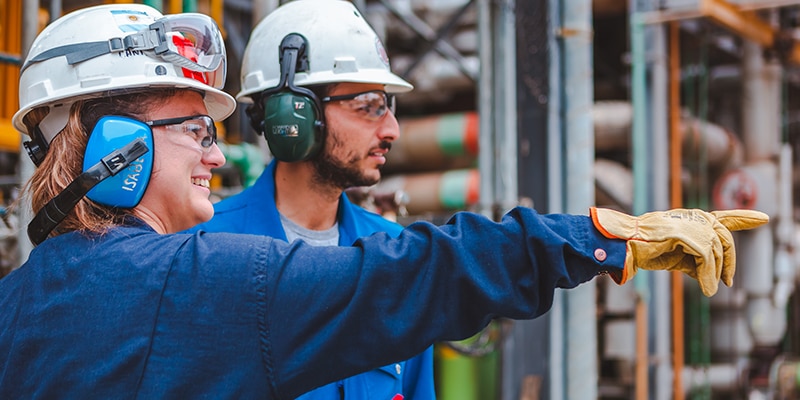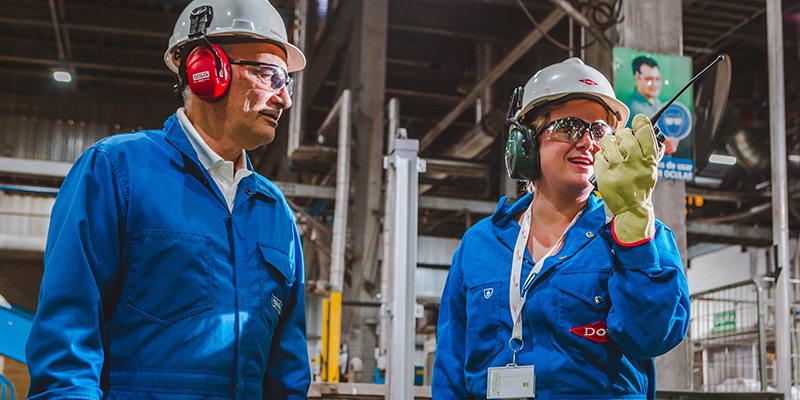
Industrial revolution makes way for global transformation
The Fourth Industrial Revolution will allow us to explore the molecular universe, design the molecules of the future – and our own sustainable future.
Currently, we are at the start of one of the most exciting times in history. As we progress, we will continue to open the door to the future. That future is one of major disruption, significant opportunities and the need for scientific intervention to reverse humanity’s harm to our beautiful planet Earth.
The present and future is the Fourth Industrial Revolution, or 4IR.
What does this mean as we move forward? Let’s take a look.
The next three decades will be truly fascinating, full of technological wonders, human progress and fascinating discoveries.
The world I could foresee 30 years into the future is one where we will be on a clear path to solving some of the most challenging problems facing humanity and our planet – from climate change and biodiversity losses to income inequality. This is a world where the Fourth Industrial Revolution would be fully unfolded and in full operation. The chemical industry and material science would be the core of both the 4IR and the heart of the solution.
The 4IR will revolutionize how we live, work, and relate to our planet and nature. Breakthroughs and technologies will disrupt all aspects of our human life and the businesses and industries where we operate. To usher in the 4IR, we expect significant advancements. These advancements include exponential computational capacity and data, Internet of Things (IoT), Artificial Intelligence (AI), blockchain, 3D/4D printing, autonomous vehicles, sustainable and quantum chemistry, synthetic biology, biomimicry, circularity and the arrival of many other exponential technologies.
Technology will be even more embedded in our lives, ushering in a new age where life expectancy rises, increased production and well-being will advance to levels never seen before. Technology will enable us to travel farther and deeper into our physical and molecular universe. And technology will allow us to develop better medicines and even manage our personal and societal ecosystems almost instantaneously.
Infinite end-to-end nano building and molecular platforms will allow us to immediately create and recycle whatever we may need, from clothes to vehicles to buildings to other items and tools. Nano building will use only carbon-neutral and circular sustainable materials – for example, I may be able to print an outfit and car for my night out to the opera, just by having unlimited access to carbon-neutral and fully circular molecules. I also expect a world where the population grows to 10 billion people, and our economy grows 20 times larger than today. Despite the exponential increase of both population and production, we expect CO2 emissions to be reduced from 33 gigatons to 15 gigatons and be well on the way to carbon neutrality.
Ultimately, we will be able to restore the balance between humans and nature. Chemistry, once again, would be at the heart of this transformation. Exciting times are ahead!
Let’s start by perhaps re-stating the obvious: We are living in truly historic times. Being in the middle of a once-in-a-century pandemic (COVID-19), and the second – if not the most profound – economic recession in recent human history after the Great Depression, we are now facing a once-in-10,000-years sustainability and climate crisis.
According to the last UN IPCC Climate Change Assessment, our current climate crisis is a “Code Red for Humanity.” This still excludes other significant geopolitical and economic challenges. So the stakes are high, very high.
From a climate and human point of view, we just started the last and most critical decade to tackle and avoid the most catastrophic events from climate change and significant biodiversity losses. Not to mention that we are in the early days of the 4th Industrial Revolution, what the World Economic Forum (WEF) called the “Digital Revolution.” I describe it as the combination and convergence of three major and simultaneous revolutions: Sustainable, Digital and Social.
While the challenges are humongous and unprecedented in human history, the opportunities the 4IR presents for society and our industry are historical, as we have seen in previous industrial revolutions.
During the previous several decades and specifically since 1970, we have seen historic development in human, economic and social progress. We have doubled our population, quadrupled our global economy and reduced our carbon intensity while economic growth has reduced by half. At the same time, billions of people have been lifted from extreme poverty and we have significantly expand life spans and living standards. Unfortunately, we have also nearly doubled our use of planetary resources, and the current greenhouse gas (GHG) emissions path is unsustainable.
Climate change, emissions and material use reductions appear as formidable political, technological and economic challenges. We believe these challenges present some of the most significant business opportunities for this generation and recent history. We expect to see over $300 to $450 trillion in business opportunities over the next three to four decades from a climate perspective and an even more significant opportunity for the circular economy of products that is difficult to calculate. Importantly, it is an opportunity where those nations, industries and firms that embrace it will become the future leaders.
The chemical industry has been at the core of every previous industrial revolution, and this time is no different. Indeed, our industry tends to shine and do its best – innovate –when asked to honestly confront and solve some of the most extensive human progress and humanity challenges.
We have already seen the sustainable, “green” product market grow exponentially in five to 10 years. The sustainable revolution is a source of growth, innovation and disruption of the status quo. The digital revolution focuses on data and exponential computational capacities, allowing business and innovation cycles to speed up at levels never seen before. Due to ever-growing technologies and the need for sustainable practices globally, we are uniquely positioned to accelerate the journey of allowing business to grow, while restoring equilibrium between nature and industry. We must introduce disruptive solutions by exploring sustainability and digital sciences. By creating new breakthroughs in chemistry and material science, we will develop products that are both sustainable and profitable.
I simply cannot imagine a better time to be a chemist or in the chemical industry. These are genuinely exciting times as we look ahead to decades of wonder, transformation and disruption.
One of the most important steps our industry needs to take to ensure we can help usher in a healthier future for people and our world is establishing equilibrium with nature as our compass. We need to harness the power of digital transformations, quantum chemistry, artificial intelligence and sustainable chemistry to drive solutions that make life better and more environmentally and economically sustainable. This requires our understanding that today’s industry, chemistry, molecules and values will largely not be those of tomorrow.
The Fourth Industrial Revolution will disrupt all aspects of society and personal life – in a positive way, I hope! New waves of innovation and exponential growth are coming. There are at least six top areas of technological advancement:
- First is exponential computational capacity. The expectation is that computers will surpass the ability of the human brain by 2028 and all of humankind by 2045.
- Second is quantum chemistry. Quantum chemistry will allow for processes and tangible end-to-end molecular building by 2025-2030.
- Third is the development of artificial intelligence (AI). According to research done by Singularity University, AI is expected to at least double the world’s total GDP by 2035.
- Fourth is sustainable chemistry that will help to regain balance between nature and humans.
- Fifth is decarbonization. Decarbonization will help bring the world back to CO2 emission levels from the 1970s and eventually down to a carbon-neutral Earth.
- Sixth is the development of the circular economy and its products. Developing circular products will help significantly reduce waste and the use of the world’s finite resources.
Those might not be all of the areas of advancement, but they will help us restore the needed balance between nature and humanity.
Every single one of us fits into the Fourth Industrial Revolution. We all will play a part in developing, educating and enacting new technologies. The employee of the future will be focused on improving biodiversity and emissions and restoring this balance. The employee of the future will drive the deep exploration of the molecular universe. They will design the molecules of the future and ultimately design our future. They will be the final catalyst of our sustainable future.
Despite all the pain, distress and negative impacts of SARS-COVID-19, this pandemic has also served to remind us of something fundamental: Despite all our human progress over the last centuries, “Nature is much more powerful than humans.”
That is why we must restore the balance between nature and humanity. To reiterate what I said above, the Fourth Industrial Revolution will allow us to explore the molecular universe, design the molecules of the future – and our own sustainable future. Chemistry and sustainable sciences are the key enablers enabling us to restore the balance between humans and nature.
This is the most exciting moment in history to be in the chemistry industry. Expect significant and disruptive business opportunities to come early and often. The future is exciting. The future is chemistry.
Additional resources
For your reference, here are some great sources to learn more about the global 4th Industrial Revolution and how chemistry, sustainable science, digital breakthroughs and the need to balance nature and humanity will shape our goals and our future.
Rafael Cayuela, Corporate Strategy Director & Chief Economist





